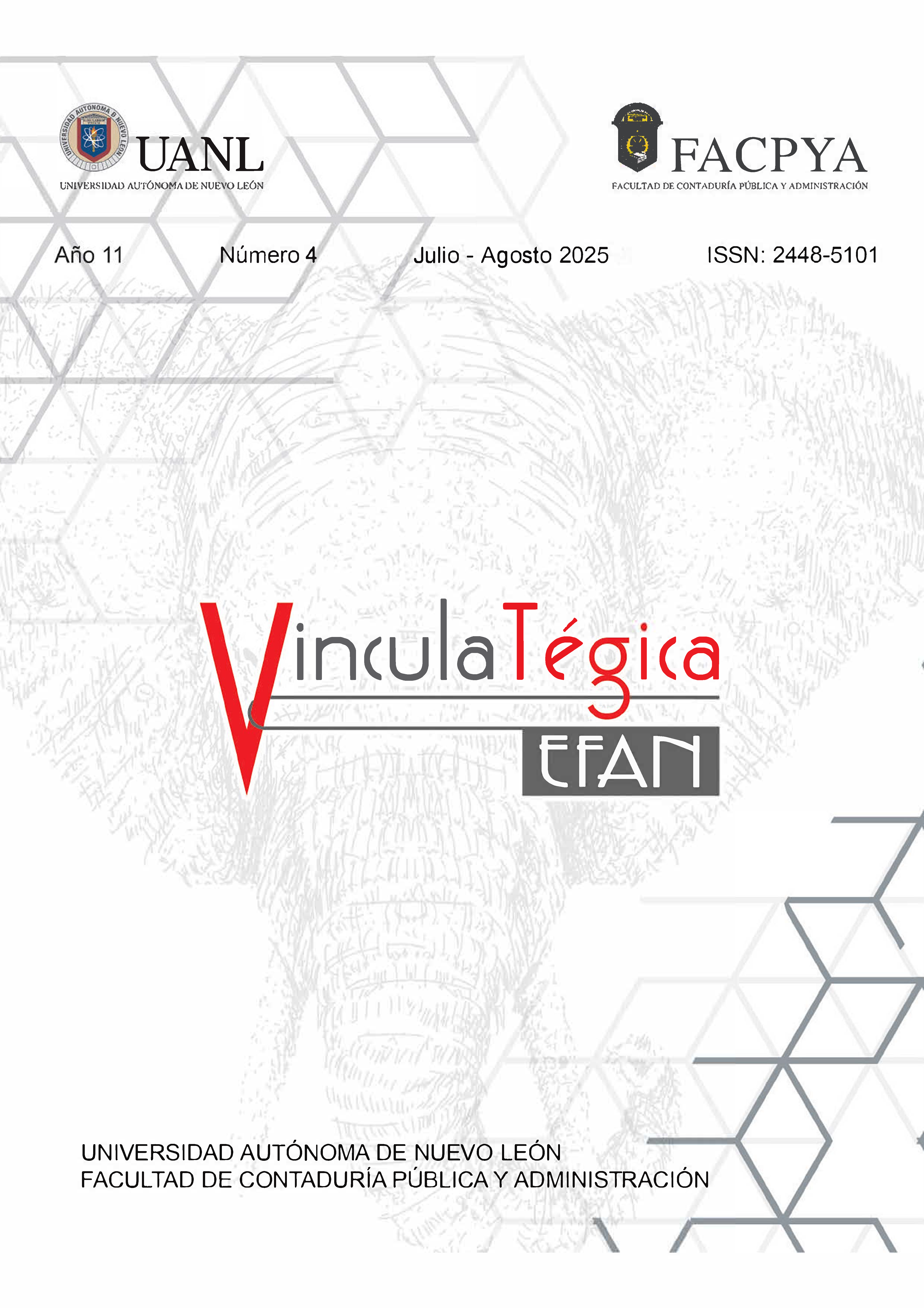Innovation as a fundamental tool to maintain the Quality and Sustainability of Organizations
DOI:
https://doi.org/10.29105/vtga11.4-1152Keywords:
Innovation, Quality, SustainabilityAbstract
This work aimed to describe the importance of promoting innovation as a key piece to maintain the Quality and Sustainability of Organizations, contributing to the well-being of society as a whole and the economic development of Countries. A qualitative approach research was carried out, with a non-experimental design and its descriptive scope, making a holistic description of Innovation, as a key aspect not only for advanced countries, since there are important initiatives and programs within developing countries such as the case of Mexico, where a series of government and regional efforts to encourage and promote it are reflected. It sought to demonstrate that there are various aspects of innovation, such as the introduction of new products and production methods, the opening of new markets and the creation of new forms of industrial organization, highlighting three main aspects that emerge: the importance of innovation in economic development, government efforts to support it and regional cases that exemplify this trend of new forms of industrial organization. Concluding that innovation is not only related to the incorporation of technology, but encompasses a broader range of activities that contribute to economic advancement.
Downloads
References
Aranda, H., De La Fuente, M., & Becerra, M. (2010). Propuesta metodológica para evaluar la gestión de la innovación tecnológica (GIT) en pequeñas y medianas empresas (PYMES). Revista Mexicana de Agronegocios, Sociedad Mexicana de Administración Agropecuaria A.C. Torreón, México. https://www.redalyc.org/pdf/141/14111976008.pdf
Harris, D. (1996). Creating a knowledge centric information technology environment (Harris Training & Consulting Services). Inc., Seattle, WA, September. https://core.ac.uk/download/pdf/290489152.pdf https://revistas.udistrital.edu.co/index.php/reving/article/view/2739/0
Instituto Chihuahuense de la Cultura. Gobierno del Estado de Chihuahua. 1981. Premio Chihuahua. Consultado 12 enero, 2009. https://www.chihuahua.gob.mx/principal .
Gerard Gaynor (1999), “Manual de Gestión en Tecnología. Una estrategia para la competitividad de las empresas.”, Tomo I, Editorial McGraw-Hill. Colombia.
OCDE (2018). Manual de Frascati 2015: Guía para la Recopilación y Presentación de Información sobre la Investigación y el Desarrollo Experimental. https://doi.org/10.1787/9789264310681-es DOI: https://doi.org/10.1787/9789264310681-es
OCDE (2007). Manual de Oslo: Guía para la recogida e interpretación de datos sobre innovación. Recuperado de http://www.conacyt.gob.sv/Indicadores%20Sector%20Academcio/Manual_de_Oslo. https://doi.org/10.1787/9789264065659-es DOI: https://doi.org/10.1787/9789264065659-es
Ochoa Ávila, Migdely B, Valdés Soa, Mario, & Quevedo Aballe, Yovanni. (2007). Innovación, tecnología y gestión tecnológica. ACIMED, 16(4) Recuperado en 18 de febrero de 2025, de http://scielo.sld.cu/scielo.php?script=sci_arttext&pid=S1024-94352007001000008&lng=es&tlng=es.
Ollivier Fierro, J. (2009). El problema de rezago tecnológico de las microempresas industriales y alternativas de solución. Contaduría y Administración, 221. https://doi.org/10.22201/fca.24488410e.2007.606 DOI: https://doi.org/10.22201/fca.24488410e.2007.606
Pedroza, Á. y J. Sánchez. 2005. Procesos de Innovación Tecnológica en la Pequeña y Mediana Empresa. Universidad de Guadalajara. CUCEA. México
Perrin, B. (2001) Cómo evaluar y no evaluar la innovación. Publicado en SCRIBD. http://www.scribd.com/doc/7227747/evaluar-innovacion
Quintas, P., Lefrere, P., & Jones, G. (1997). Knowledge management: A strategic agenda. Long Range Planning, 30(3), 385-391. doi: http://dx.doi.org/10.1016/S0024-6301(97)90252-1 DOI: https://doi.org/10.1016/S0024-6301(97)90252-1
Schumpeter, J. A. (2017). The Theory of Economic Development. Routledge. https://doi.org/10.4324/9781315135564 DOI: https://doi.org/10.4324/9781315135564
SE-CONACYT 2002/01. Fondo Sectorial de Ciencia y Tecnología para el Desarrollo Económico. Términos De Referencia. Convocatoria. Consultado 10 febrero 2009. http://www.conacyt.mx/Fondos/Sectoriales/ECONOMIA/200201/ECONOMIA_TerminosReferencia_2002-01.pdf
Secretaría de Desarrollo Económico. Gobierno del Estado de Nuevo León. 1993. Premio TECNOS. http://www.tecnos.org/ganadores/index.html
Secretaría de Economía/Conacyt. Términos de Referencia Convocatoria, 2008. (http://www.conacyt.mx/Fondos/Sectoriales/ECONOMIA/2008-01/FondoInnovacionTecnologica_Terminos-Referencia_2008-01.pdf
Solleiro, J.L. (2002). El Programa Especial de Ciencia y Tecnología 2001-2006 (Pecyt) y el Sistema Nacional de Innovación, Aportes, Mayo-Agosto, Año/Vol. VII, Número 020, Benemérita Universidad Autónoma De Puebla. Puebla, México. pp. 41-53. Consultado en https://www.redalyc.org/pdf/376/37602004.pdf
Stroeken, J. H. M. 2001. The adoption of IT by SME’s: the Dutch case. Journal of Enterprising Culture 9(1):129-152. https://doi.org/10.1142/S0218495801000080 DOI: https://doi.org/10.1142/S0218495801000080
Triandis, H. C. (2018). Individualism and Collectivism. Routledge. https://doi.org/10.4324/9780429499845 DOI: https://doi.org/10.4324/9780429499845
Valerio, G. (2002). Herramientas tecnológicas para administración del conocimiento. Transferencia, Centro de Sistemas de Conocimiento, Tecnológico de Monterrey, Año 15 (Nº 57 enero), 19-21. https://d.documentop.com/queue/herramientas-tecnologicas-para-administracion-del-conocimiento_59f8a7991723dddf2b984c70.html
Villaprado, O., & López, M. (2015). La influencia de la tecnología en la administración. Contribuciones a la economía. Revista Contribuciones a la Economía. Consultado en https://dialnet.unirioja.es/servlet/articulo?codigo=9163389
Downloads
Published
How to Cite
Issue
Section
License
Copyright (c) 2025 Corina Tello Fomperosa, Juan Pablo Munguía Tiburcio, Martha Eugenia Aguilera Molina

This work is licensed under a Creative Commons Attribution 4.0 International License.
a). Authors keep copyright and give the journal the right of the first publication of the work under a Creative Commons attribution license. This license allows others to share the work as long as original authorship and initial publication in this journal is acknowledged.
b). Authors may make other independent and additional contractual agreements for the non-exclusive distribution of the version of the article published in this journal (e.g., include it in an institutional repository or publish it in a book) as long as they clearly indicate that the work was published for the first time in this journal.







